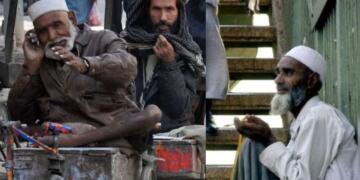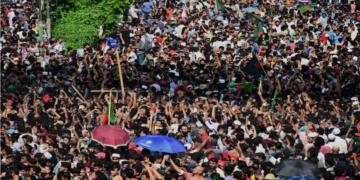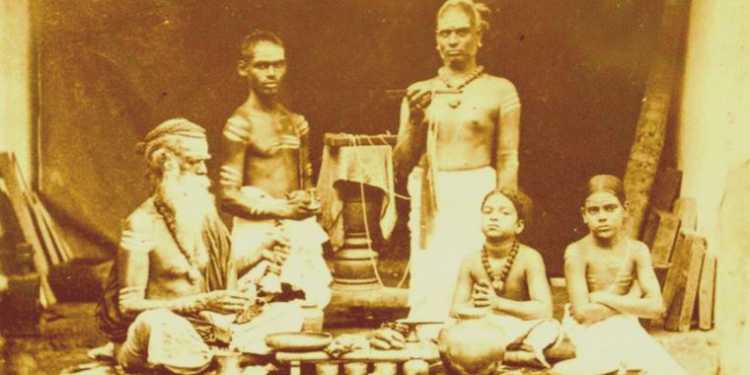Dravidian movement in the South India was perhaps the least studied from an analytical perspective and most misunderstood from a subjective perspective. Similar to many other problems that India had faced earlier and even now, Dravidian movement too has sprouted from the ‘Caste-based discrimination’. Irrespective of what was written in Vedas, the Varnasram was interpreted by those who has the power to interpret it. Whether one accepts or not, there was caste based discrimination and when the situation goes beyond the threshold, the reversal would happen. The Dravidian movement has originally started as ‘Anti-Brahminism’ and to provide Self-Respect to people belonging to Non-Brahminical castes.
Though the British and evangelists played a role in propagating the theory of Aryans invading Dravidians inhabiting the Indus valley pushing them down south, the blame squarely lies on the Indian educated elite to believe it despite the apparent lacunae. Like now, always the elite was open to anything that was foreign and despised that was indigenous. To promote the Aryan theory, it was said that Aryans wrote Vedas, after replacing Dravidians in Indus valley. British scholars could not explain why white complexioned Aryans chose to worship Black Gods Rama and Krishna and dark Dravidians worship the white god from Himalayas, Siva. The Aryavarta described in scriptures too vary at various places depending on times in which a particular scripture was written. And, in any of the scriptures, should the Aryans write about the conquering of Dravidian territory? Nowhere such reference is found. Still, the elite of those times (like they are today) supported the Aryan invasion theory and started considering themselves ‘Aryan’ much like the way Hitler did. In the melee lost was the true meaning of Arya that denoted a civilian, who was gentle.
Unlike in the North, the percentage of Brahmins (by that time, Brahman word too had undergone ‘apabhramsa’ to become Brahmin) in the South was and is very less. There used to be and are about only 3% of Brahmins in the South. Local kings, chieftains had gifted large tracts of land to the ‘purohits’, who were administrators of these kingdoms and to temples – again the land was with the priest, Brahmins were the biggest landowners in the South. And, there was discrimination against all other classes, especially the lower strata of the society. One can gauge the level of discrimination from the way ‘Pariah’ a proper Tamil word was internationalised to denote the ‘untouchable’.
Brahmins always occupied the administrative positions irrespective of who the ruler was . A ruler might have been a Hindu King or a Muslim Nawab or simply a British – Christian administrator. Without the consent and support of Brahmins, none could rule the land smoothly. Thus, they formed the very support to the stability of administration across time periods. And, these officiating priests and administrators considered themselves ‘Aryan’ thus branding the rest as ‘Dravidian’.
It was Robert Caldwell, a missionary –cum- linguist, who used the term Dravidian to separate the languages spoken in South India from the rest. It is a fact that ‘The Hindu’ considered him a pioneering champion of the downtrodden and an ‘avant-grade social reformer’. So, good Indians who already accepted themselves as Hindus and have accepted the name ‘Hindvi/Hindi’ for the languages spoken in the North have also accepted the term ‘Dravidian’ wholeheartedly.
This is the greatest injustice these Brahmins did to themselves and to others.
If Adi Sankara referred to himself as ‘Dravida Sisu’ in Soundarya Lahari, was he not a Dravidian? Can any practising Brahmin claim be more Aryan than Sankara himself? No. Such is the irony that happened many times in India. Adi Sankara quoted in many of his commentaries based on the texts by one Dravidacharya, which was more a title for more than one person, supposed to be predating Sankara by one millennium. It is akin to many kings calling themselves ‘Vikramaditya’ and ‘Bhoja’.
While the north was reeling under the continuous onslaught by western invaders, it was the Brahmans of South who safeguarded the old literature. Even the most authentic text available and referred by current scholars was written by Sayanacharya, during the initial days of Vijayanagara Empire.
And, Dravida was not even a Tamil word. In fact, Tamil has very less words with two consonants ‘D & R’. In all probability, Dravida itself was a Sanskrit word. Veda itself was from Vid, which means knowledge. Tra in Sanskrit means three. As originally there were only three Vedas (even in Manusmriti, it is mentioned only Rik, Sama and Yaju are the three Vedas), those who have command on all three might have been titled ‘Dravidacharya’. This may be similar to the current titles like Dwivedi, Trivedi and Chaturvedi.
In their zeal to establish themselves the best of the society, Brahmins ditched the much-revered title ‘Dravida’ and choose to be Aryan rendering others in the South to be Dravidians.
And when the movement started, it was to ensure self-respect to Non-Brahmins. The movement was not exclusive to Tamilians. Though it was during Periyar EVS Ramasamy Naicker who was attributed as the main pillar of this movement, this has started before Periyar when the South Indian Liberal Foundation was established in 1917 by TM Nair (a Malayalee), Thyagaraja Chetty (obviously of Telugu origin) and C. Natesa Mudaliar (a proper Tamilian). It was a movement by educated Non-Brahmins to help the Non-Brahmin communities. When Non-Brahmins were educated under the British regime and got jobs in the administration and only then realised the disparity that existed in the society.
While Brahmins, who account for about 3% of the total male population occupied two-thirds of top postings in the government, Non-Brahmin Hindu males were only in 15% posts despite numerically accounting for 85.6%. When the movement started, it was not to claim the post based on numerical strength but to have opportunities to compete with Brahmins in a respectable way. It was the lack of opportunity to an education that rendered the large population not suitable for higher jobs and so the status in the society.
Of the major newspapers/magazines in the presidency, two were run by Europeans, three were by evangelists and four by Brahmins (The Hindu, Indian Review, Swadesimitran, Andhra Patrika) and one by Anne Besant (New Indian). Anne Besant was considered sympathetic to the Brahmins as her view of India was based on Vedas and other ancient scriptures and not on the present-day problems faced by the Indian people. Madras Presidency at that time was whole of today’s Andhra Pradesh, Tamilnadu and parts of Kerala, Karnataka and Odisha. The movement was covering entire presidency.
The British too in a way supported the new movement that was against the Brahmins, as the local administration was still the hands of Brahmins despite final strings were in the hands of the English. However, wary of social disturbance initially British have acted against the new movement and at one point of time being Anti-Brahmin was equated to being Anti-National.
In 1917, the Justice party was founded to fight for the Non- Brahmins.
Three newspapers in English, Tamil and Telugu were started named Justice, Dravidian and Andhra Prakasini respectively in these languages so that issues of a larger section of the populace too was published. Like all movements or political parties, Justice Party was founded with noble intentions and considering the Russian revolution happened in 1917, the South Indian Liberal Foundation that was formed on 20th Nov 1916 was ahead of other communist thinkers of that time.
Objectives of the federation were defined as:
- to create and promote the education, social, economic, political, material and moral progress of all communities in Southern India other than Brahmins,
- to discuss public questions and make a true and timely representation to Government of the views and interests of the people of Southern India with the object of safeguarding and promoting the interests of all communities other than Brahmins and
- to disseminate by public lectures, by the distribution of literature and by other means sound and liberal views in regard to public opinion
On the issue of Brahmins, one of the founders Tyagaraja Chetty said “Towards the Brahmins, we cherish no feelings of bitterness. If we have to fight them we do so in the interests of truth and justice, and we shall be prepared to extend to them too, the right hand of fellowship when they shall see the wrongs inflicted upon us and repent. Ours is essentially a movement of love and not of hate, or love based on a sense of what is due to the various classes which constitute the population of this vast and ancient land”.
When Justice Party won the election to the Presidency in 1920, Tyagaraja Chetty refused to become Chief Minister. A Subbarayalu Reddiar became first Indian Chief Minister. Though Reddiar was CM only for few months, Ramarayaningar, (Raja of Panagal) assumed the office. The diarchal system of governance that was allowed by the British rendered the local government powerless and some like the Agriculture minister Kumara Venkata Reddy vocally expressed his disappointment.
Meanwhile, Periyar EV Ramaswamy Naicker was a member of Indian National Congress from 1919-1925. Despite his lack of confidence in the Brahminical thinking of Congress, Periyar worked under the gambit of the Congress. His involvement in Vaikom Satyagraha (in Vaikom, Thiruvangoor Presidency where around temples untouchables were not allowed to walk and to ensure, even police were deployed. However, Congress (read Brahmin) newspapers never highlighted the participation of Ramaswamy in the agitation. Despite he courted arrest during Non-Cooperation movement, Temperance Movement, Videshi Bahishkaran etc., while holding the Chairmanship of Erode Municipality, he sensed the Brahminical thinking of the Congress leadership and choose to part ways. In 1925, he started Self-Respect movement as a social movement and never had political ambitions, unlike other leaders of that time.
As with Indians everywhere, differences emerged in the Justice Party. Tyagaraja Chetty was accused of favouring Telugu people over Tamils for cabinet positions. Highly individualistic CR Reddy (Founder of Andhra University, whom Dr Sarvepalli Radhakrishnan succeeded) split the party with some of his supporters. During 1926 to 1930, there was Governor’s rule as the Swaraj Party that won the elections refused to form the government! Again the rule of Justice Party continued – in the period of great depression.
Though the movement was against, all Zamindars (landlords) belonging to Non-Brahmin communities were present in the Justice Party and continuous bickering and corrupt practices soon made the party lose its base. When the Raja of Bobbili, Ramakrishna Ranga Rao was the CM, corruption became synonymous with the government. Ministers were drawing salaries as high as ₹4300/- (in the 1930s) was criticised by even their own newspapers.
Finally, Justice Party lost elections in 1937 and Congress formed a government under the able (?) leadership of Rajaji. In fact, it was Rajai who gave the much-needed thrust to the Anti-Brahmin movement. Parallel to the Anti-Brahmin movement, Tamil renaissance was in progress since the early 1900s. When C. Rajagopalachari’s government made studying Hindi compulsory in the schools, all hell broke loose. With one decision, he ensured the merger of the Tamil renaissance, which was a pure literary movement joining forces with the Anti-Brahminism.
EV Ramaswamy too allied with Justice Party to oppose Hindi being made compulsory. The opposition to Hindi imposition was supported by Students and the decision was seen as Rajaji, being an Aryan was imposing his language on Dravidians. It was a fight between Congress and the rest of people. It was during this time the Anti-Brahminist movement had turned into a predominantly Tamilian one.
So much mistrust Rajaji created by his one order, next year in 1938, there were demands to have a Dravidian or Dravida Nadu, separately from India that would cover all southern states. However, it was the lack of confidence of people speaking Telugu, Kannada and Malayalam in the leaders of Justice Party that broke the secessionist demand. In fact, one can say the first thoughts for a separate state for Telugu speaking people have been thought during this time.
Contrary to their claims of a casteless society, all Justice Leaders have ridden to power based on their own caste constituencies. They lost the support of Muslims and Untouchables and were called a party of other backwards castes. Individual leaders of the party have cultivated caste based followers and it became a conglomeration of various backwards castes, while the lowest strata have no representation.
Rightly Periyar thought ‘if we get respected socially, we will be respected politically too’. However, he went on an overdrive in pursuing his Anti-Brahminist attitude and opposed ancient Tamil literary works like Kamba Ramayanam, Periya Puranam etc. This placed a wedge in his followers as the theist followers could not digest his atheist philosophy. By imposing his atheist philosophy, in fact, he caused much damage to the Dravidian movement.
In 1944, he transformed the Justice Party into Dravidar Kazhagam, the Gangothri of all Dravidian political parties of the current generation. Periyar wanted to have a separate Dravida Nadu and immediately some of the old members of Justice Party revived the original outfit under the leadership of PT Rajan and called themselves ‘Original Justice Party’. Despite his political acumen, Periyar could not sense that there was no enthusiasm in the Tamil people to have a separate state.
While Periyar was aiming for Dravidanadu, Conjeevaram Natarajan Annadurai was in support of the Indian state that was already realised in 1947, with more autonomy to individual states. It was however when seventy years old Periyar married a thirty-two-year-old Muniamma, his supporters felt he betrayed the standards he spoke of often. In 1948, CN Annadurai split the party and formed Dravida Munnetra Kazhagam (DMK). Still, DMK subscribed to the philosophy of Periyar in all respects, except that of creating a separate Dravidian nation.
Negatives of Dravidian Movement (It is better to end on a positive note so these are taken first):
- When people like Muniswamy Naidu supported the cause of including the Brahmins into the party and the party passed a resolution allowing Brahmins into its cadre as early as 1929, a psyche was generally created against Brahmins.
- Despite its call for an alliance of everyone other than Brahmins, there happened alienation of Muslims. The prejudice against the Untouchables, by the other backwards castes, was almost the same, which they condemned of Brahmins practising against them all.
- Supporting the British, just for the sake of opposing Brahmins.
- The Exodus of Brahmins from the South. This continued even after independence. During the rule under DMK, Brahmins were attacked and were struggling for lives.
- Sowing the seeds of linguistic-based states, as it happened in the case of a separate state for Telugu people. The irony is the percentage of Telugu people after Andhra Pradesh was carved out of Tamilnadu in 1953 was about 40-60%, who became Tamilians with immediate effect.
- Despite its Anti-Brahminist attitude and rational thinking, the Dravidian movement failed to eradicate both caste discrimination and practices based on blind faith from the masses.
Positives of Dravidian Movement:
- In true sense, backwards classes started to consider themselves equal to Brahmins for the first time. It was for the same reason, after about seven decades, Yadavas and Dalits of the North fought. Covered in the corruption that has become a hallmark of both Yadava rules in UP and Bihar is the ‘sense of equality’ that the backwards castes have attained in the 21st century, after the rule by Yadavas.
- Creation of Andhra and Annamalai Universities.
- Introducing mid-day meal scheme. First, it was introduced in corporation schools of Madras at Thousand Lights. This was later re-introduced by MG Ramachandran and was replicated nationwide increasing attendance in schools.
- Tamil Renaissance: Though this was a parallel movement, this got support during Anti-Hindi agitations and the spread of language was ensured. Modern Tamil literature started including writers from all castes, whereas earlier it was confined to Brahmins. In fact, it was Tamil Renaissance that prevented Dravidian movement from becoming a secessionist movement, as the bonds between Tamil and Sanskrit were perhaps beyond individual choices and political preferences. [It is only Tamil that has an equal repository of ancient literature that can compete with Sanskrit. As most invaders came from North, Tamil remained in the shadows as first Mughals and later the British evangelists tried to acquaint and learn Sanskrit for long. It was only in the 19th century the evangelists concentrated on Tamil and worked on it. However, the old Brahmins of Tamilnadu were normally Tri-lingual (including Telugu) and so the literature was never lost but was continuously enriched.
- Reservations to Backwards castes was first introduced in 1921, which is the standard for all successive legislations. [We may continue to argue its relevance in the current scenario, but when reservations were introduced, the society was different]
- The Act of GoI (1919) to bar women from becoming legislators was overthrown in 1921 and in 1926, Dr Muthu Lakshmi Reddy became a first legislative member of India, when she was nominated to the council.
- All Temples were brought under the control of the government to prevent misuse of their assets by individual trustees. Though this has mixed results, on a whole it has positive results as maintenance of the temple (including the Brahmin priest) was continued in a better way. In AP, this helped to revive many dilapidated temples.
- Compulsory Education for children (including girls) was introduced in 1920, and amended in 1934-35, with a clause of penalty to parents if they withdrew children from schools.
- Long before communists came into the picture, land reforms were proposed strengthening the rights of cultivators on the land.
Often credited for the rise of the Dravidian movement were the British evangelists. Though they supported the movement and used all the power that was at their disposal, it shall be noted that it is basically an inherent lacuna in the Hindu society, where caste discrimination was practised with much vigour that gave birth to and sustained this movement for long.
References:
http://timesofindia.indiatimes.com/…/articlesh…/57713224.cms
http://www.thehindu.com/…/pioneering-cha…/article2267181.ece
































